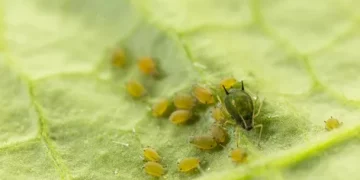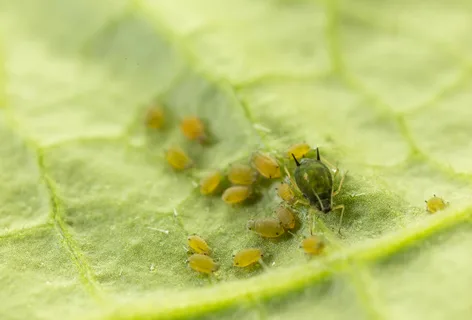Aphis gossypii, commonly known as the cotton aphid, is a pest that can cause significant damage to cotton crops. In this article, we will discuss the latest data on the life cycle and behavior of cotton aphids, their impact on cotton yields, and the latest methods to control their population.
Aphis gossypii is a small, soft-bodied insect that feeds on the sap of cotton plants, causing the leaves to wilt and distort. The cotton aphid is a highly adaptable pest that can reproduce rapidly, producing multiple generations in a single season. This pest can cause significant damage to cotton crops, leading to a reduction in yield and quality.
According to recent studies, the population of cotton aphids can be controlled through a combination of chemical and biological methods. The use of insecticides, such as pyrethroids and neonicotinoids, can effectively reduce the population of cotton aphids. However, the overuse of insecticides can lead to the development of resistance in cotton aphids, making them harder to control.
Biological methods of control, such as the introduction of natural predators like ladybugs and lacewings, can also be effective in reducing the population of cotton aphids. These natural predators can help to maintain a balance between cotton aphids and other beneficial insects in the ecosystem, reducing the need for insecticides.
In conclusion, Aphis gossypii is a serious threat to cotton crops and can cause significant damage if left unchecked. Farmers, agronomists, and agricultural engineers should be aware of the latest methods for controlling the population of cotton aphids to prevent significant crop losses. By using a combination of chemical and biological methods, we can effectively manage the population of cotton aphids while protecting the health of our cotton crops.
#Aphis gossypii #Cotton aphid #pest control #crop protection #biological control #insecticides #natural predators
































